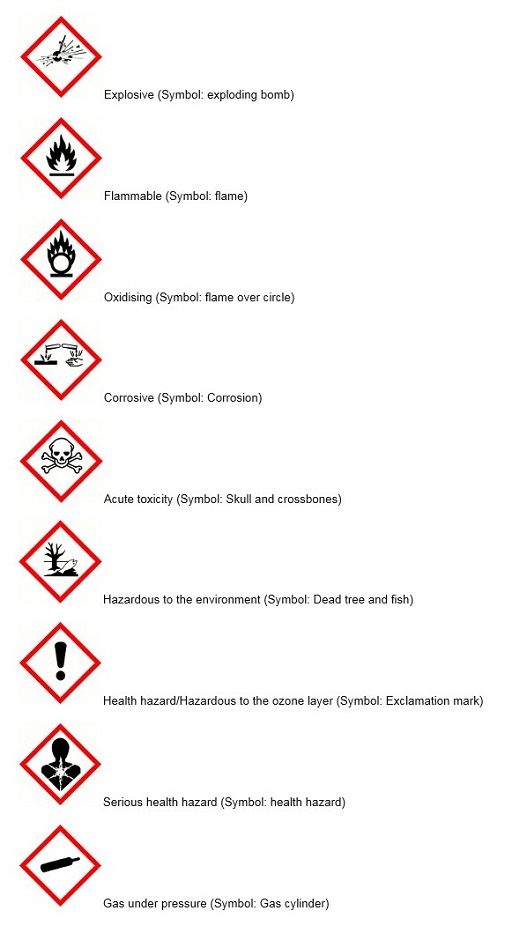6.2 Chemical Classification, Labelling and Packaging (CLP) Regulation
These regulations were first introduced in 1992 and known as CHIP1, and have since been revised numerous times to keep up with developments in the field of health and safety. The CLP Regulation (EC 1272/2008) came into force on 20th January 2009. The Regulation was implemented in all EU Member States and the United Nations’ Globally Harmonised System (GHS) for classification and labelling. It introduced new classification criteria, hazard symbols (called ‘Hazard Pictograms’) and labelling phrases (known as ‘Hazard Statements’ and ‘Precautionary Statements’). The CLP Regulation applied directly in all EU Member States, requiring no national transposition. Its provisions were phased in over a number of years and came fully into force on 1st June 2015 – by which point all plant protection products (PPPs) placed on the market had to have been classified and labelled in line with CLP.

The aim of these regulations is to help protect people and the environment from the ill effects of chemicals. They apply to both single substances and mixtures of substances (often called preparations). This is done by providing information about their properties and ensuring they are packaged safely. If users know about the chemicals and how to control them then they are less likely to do things with them that will harm themselves, other people or the environment.
The following are definitions in the regulations that must be made clear:
Category of danger is a description of hazard type, e.g. highly flammable.
Classification is the precise identification of a chemical by assigning a category of danger and a risk phrase using set criteria.
Risk phrase (R) is a standard phrase that gives simple information about the hazards of a chemical in normal use.
Safety phrase (S) is a standard phrase that gives advice on safety precautions when using the chemical.
It is now a legal requirement that all containers of chemicals are labelled correctly. This ideally should also include volumetric flasks for standards and buffers and round-bottomed flasks containing samples.
